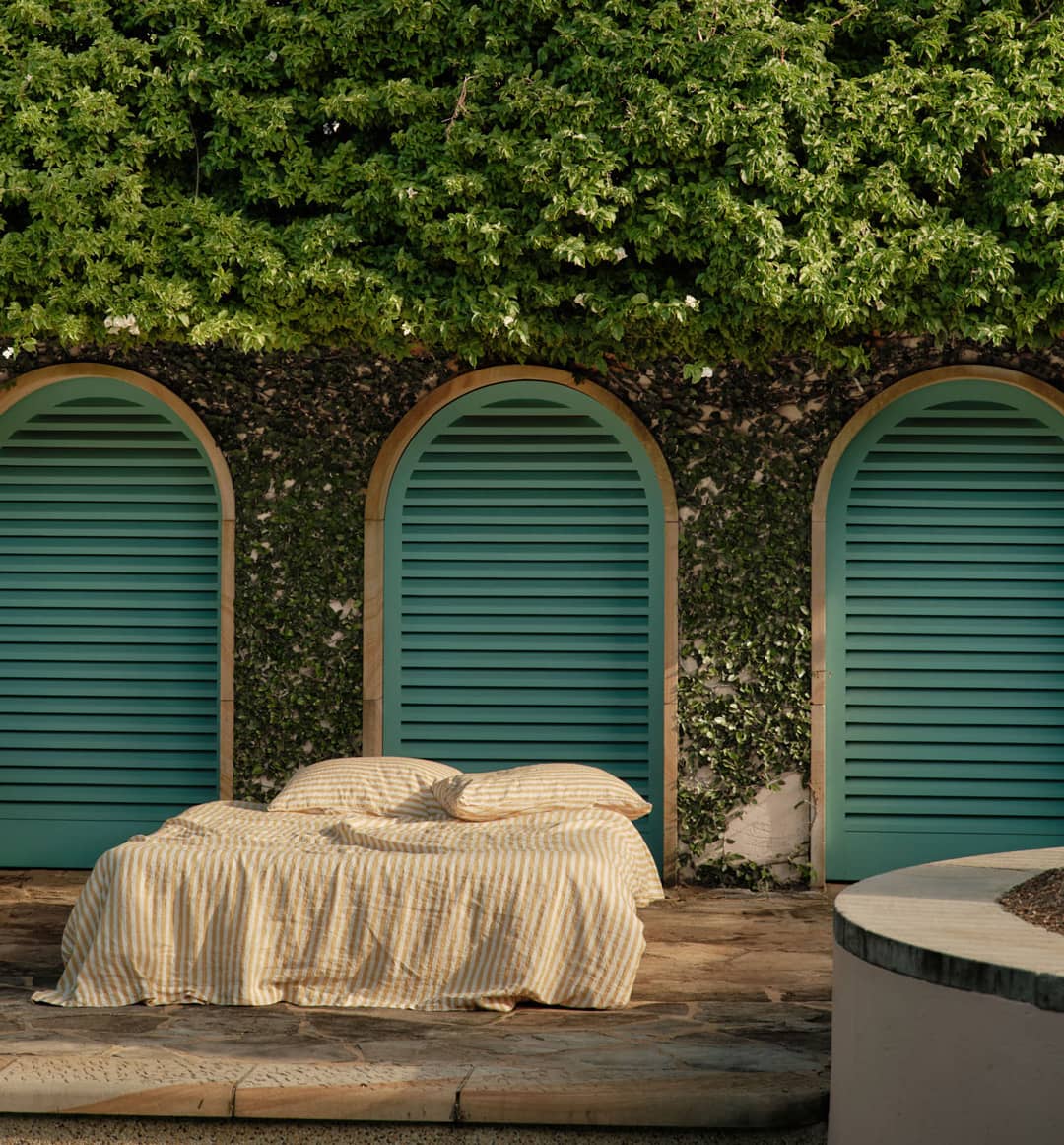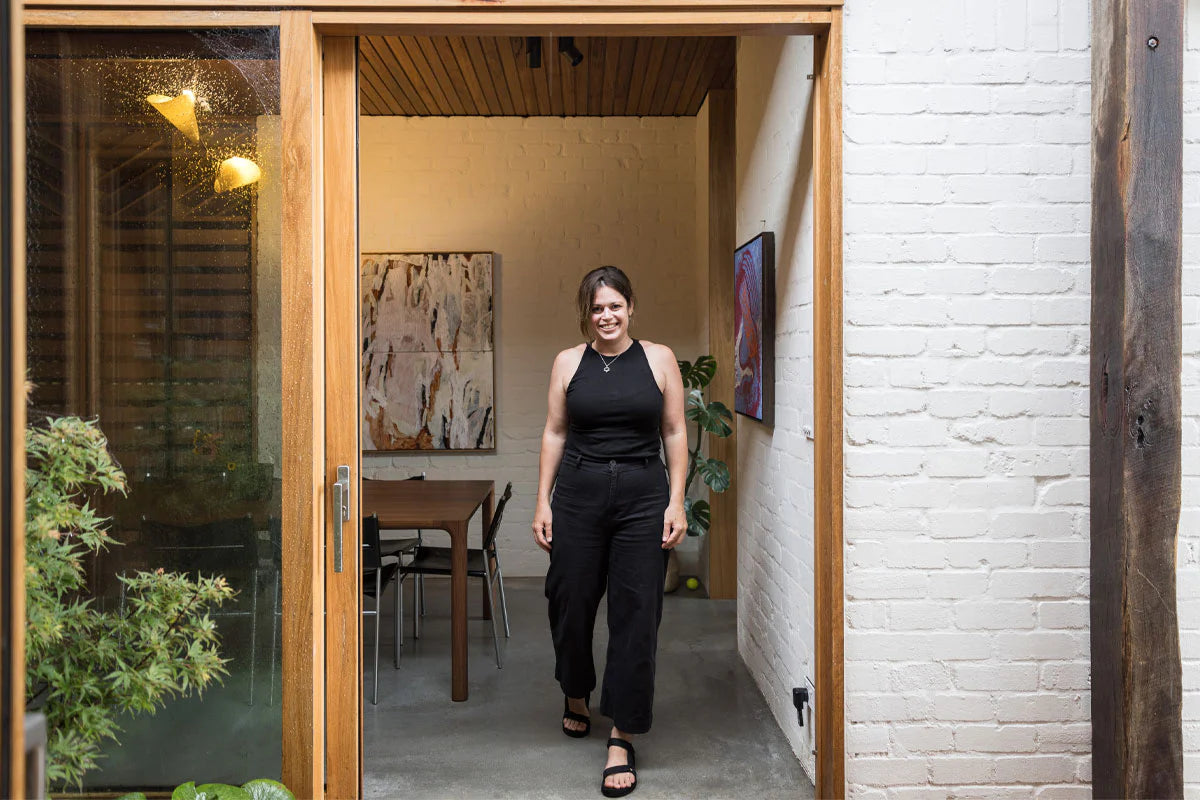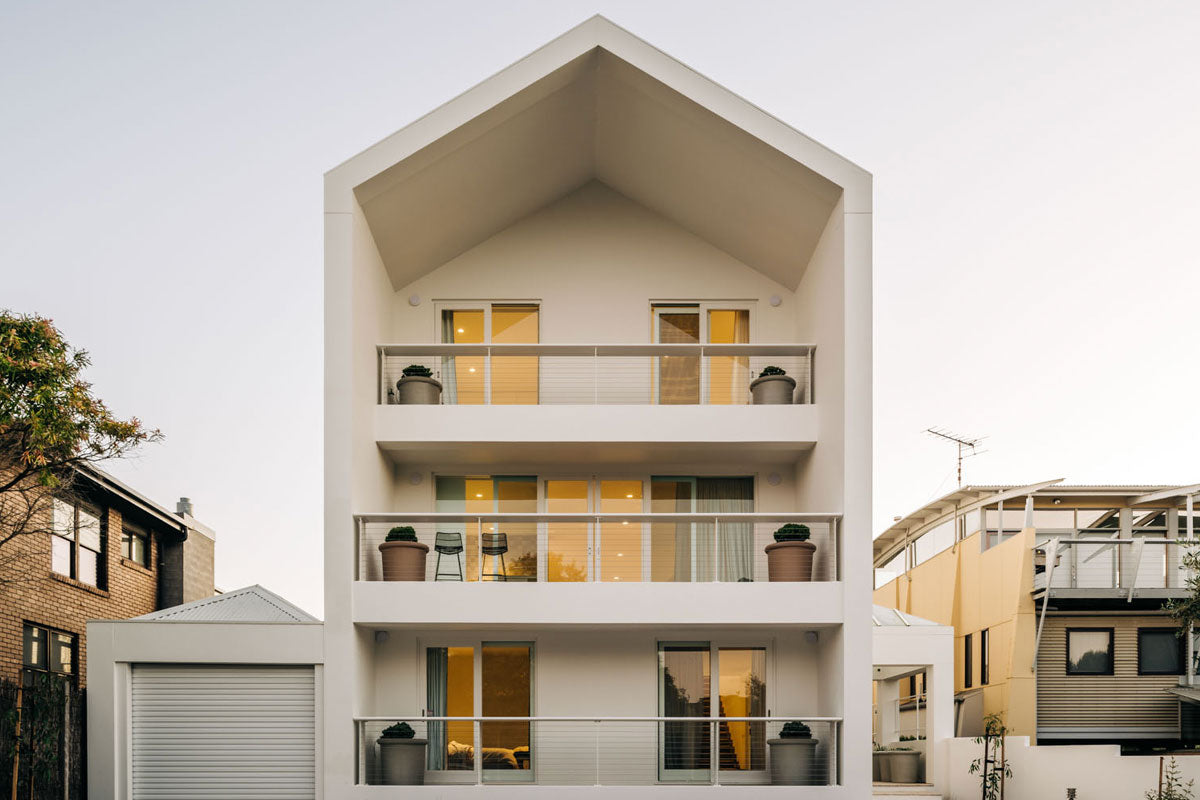Sydney’s most stunning, restored fisherman's cottage

Remote, but a stone’s throw from the heart of Sydney. Packed to the rafters with gorgeous hand-sourced nick-nacks, but the most calming environment you could while away a weekend in. Surrounded by a stunning beach on one side and dense bush on the other…. It’s The Little Black Shack, one of our most loved Sydney getaways.


This incredible location may have “little” in the title but it’s by no means small in stature or story. Originally a cottage hand-built by fishermen in the 1930s, it’s been lovingly restored by owners and sustainability advocates Ingrid & Jamie into a stunning, homely and private getaway.


And when we say private, we mean it. Perched on the edge of Mackerel Beach, it’s accessible only via ferry or a hike through national parkland. Once there, the 2 bed home invited you in with its rustic, nautical and relaxed style.


Linen Duvet Cover in Natural, Linen Flat Sheet in Natural, Linen Fitted Sheet in Ocean, Linen Pillowcase set in Storm and European Pillowcase set in White
Reclaimed wood is used throughout and the house is styled with elements sourced from far-flung places around the world. All with a view to creating a home that’s an ode to the humble, laid-back lifestyle beach side living promotes. All this, plus C+G linens naturally, make for a stunning, welcoming and tranquil space.


Linen Duvet Cover in Clay, Linen Flat Sheet in Clay, Linen Fitted Sheet in White, Linen Pillowcase set in White
We recently hopped on the ferry to pay the Shack a visit—to snaps some photos of our linens in action and chat to Jamie & Ingrid about their approach to sustainability, why they love linen and how they styled the space.


Skip the ferry, and be transported straight there via our interview with Jamie below.
C+G: Tell us where the inspiration and background idea came from with The Little Black Shack?
JK: From the age of twenty three we’d spent a lot of time travelling and living around the world. We always worked in big cities yet in between jobs we always found ourselves being drawn to humble, laid back places by the sea. Our favourite ones being Mexico, the Greek Islands, Kauai and The Carribean. All had relaxed lifestyles and all had close relationships with the sea. When we returned from our first stint living abroad we got married and bought our own humble house by the sea. We bought an old run down cottage that nobody else wanted. Its owner was into pottery and Japanese culture and had created this humble little house up in the trees overlooking the ocean along a quiet stretch of road between Whale Beach and Palm Beach on Sydney’s northern beaches. It was up sixty five stairs and practically unlivable but it had Japanese inspired rooms amongst the tree canopy with floor to ceiling windows overlooking the sea. It was the furthest we could get from the city yet still be in Sydney. And it was cheap – being in our mid-twenties it was perfect for us. We spent a lot of time and very little money fixing it up ourselves with the help of family and friends and it became our happy place for the next twenty years. Apart from a few years living and working in New York we raised our three children and dog there.
One weekend whilst living there we were out on Pittwater (just over the other side of Palm Beach), when we noticed a ‘For Sale’ sign outside the shack. Long admirers of the very tiny and very original shack, we decided to have a closer look. After spending about an hour trying to work out how to get to it, and despite it being quite run down and needing a lot of structural work (it had been on the market for two and a half years without one single offer), as soon as we set foot on the property we felt at home. It reminded us of all our favourite faraway places by the sea yet it was literally in our own backyard and still in Sydney.
The tiny shack sat on a highly coveted huge double block of waterfront land but we never intended on knocking it down like most people expected us to. We bought it for what it was – a small group of handmade structures by the sea that combined to form a humble family shelter. Our intention was always to restore the shack, not build something new.
When we bought the shack it was cream fibro. Among a myriad of other structural and restoration work we reclad it in timber and stained it black so it would blend in with the surrounding bush. Given its small size and its new colour, we started referring to it as the little black shack and soon everyone else did too.
C+G: The interiors play such an important part to the story - can you expand on them a little bit more?
JK: Passionate about sustainability since the day we first met (as twenty one year olds), we were determined to be as conscious as we could in the materials and building techniques used to restore the shack. We were determined that creating our home would not be at the expense of the environment.
There is not one new piece of furniture in the shack. If we didn’t already have it or couldn’t find it second hand, we built it from second hand timber and hardware we’d collected over the years and left over building materials we had on hand.
For instance, the TV and stereo cupboard in the lounge room is made from the ramp we built to get the building supplies up on site from the beach at the bottom of the shack. It was already second hand timber to start with, then it was weathered by the sun and sea for about 18 months before we gave it a new life as an entertainment cupboard.
Over the years and throughout our travels we had collected quite a few ‘pre-loved’ things from all over the place. Most of them by the sea. The shack was our favourite place to spend time so it was only natural that it became the place for us to put all our favourite things. We’re not interior designers and nor did we hire one. We just filled the shack with what felt right to us.
Pretty much everything in the shack has an interesting story on how it came to be there. Like the handmade driftwood carving of a fishing boat we bought whilst backpacking in the Greek Islands. We had to go without a few meals and sleep at the beach for two nights to afford that one. Not that it was expensive — we’ve never been into fancy things, but when you’re backpacking for an indefinite period you have a pretty strict budget! There’s also a hand-dyed, hand-woven mat we bought directly from a weaver’s studio on another Greek island. We met a lady in a weaving shop in the village and she invited us back to meet her husband (the weaver) and see their house and studio where he practised his craft.
There’s also vintage cushions from Kauai, mermaids from a road trip in the Pacific North West of America, as well as simple rustic lime squeezers from Mexico. Not to mention finds from flea markets all around the world and road trips around Australia. Nothing in the shack has a high monetary value but everything in the shack has meaning to us, which probably explains why we feel so at home there.


C+G: For those who don’t know the remote location of Mackerel Beach, how can you describe it to people?
JK: Mackerel Beach is a small seaside community on the western shores of Pittwater and is literally just across the bay from the exclusive Sydney suburb of Palm Beach. Accessible only by boat or by hiking through Ku-ring-gai Chase National Park, Great Mackerel Beach is surrounded by cliffs in the back and a beautiful sandy beach out the front.
There’s only about 100 houses (around 85% of which are weekenders), no roads, no shops and no cars. Great Mackerel Beach is very secluded yet only about an hour from the heart of Sydney. We love it here because you can be so in touch with nature and so far from modern life. We also like that being remote (a boat ride from the shops) makes you very resourceful.

Linen Duvet Cover in Natural, Linen Flat Sheet in Natural, Linen Fitted Sheet in Ocean, Linen Pillowcase set in Storm and European Pillowcase set in White
C+G: We love that you have Carlotta + Gee linen and your guests can sleep listening to the waves while sleeping in our linen. What do you love most about sleeping in linen?
JK: We were attracted to linen because of its environmental credentials. We were then attracted to you because of yours. Through your passion and involvement you have taken sustainability to another level with Carlotta + Gee. From your connection to your flax farmers in Normandy to the family-owned factory where Carlotta + Gee is made, right down to your conscious packaging.
We also love all the natural health benefits linen provides and how it just gets better and better with age – just like our furniture. It feels like the most natural thing to sleep in. Especially when you can see the moon and the stars, feel the sea breeze and hear the waves lapping on the shore below, all from the comfort of our big king sized, handmade bed. We enjoy the most peaceful sleep at the shack.

Linen Duvet Cover in Clay, Linen Flat Sheet in Clay, Linen Fitted Sheet in White, Linen Pillowcase set in White
C+G: Like at Carlotta + Gee, sustainability plays a big role in your values. Why is this so important to you?
JK: We live by the Native American saying: “We do not inherit the Earth from our ancestors, we borrow it from our children.” From a young age we’re all taught that when you borrow something from someone you take care of it and really look after it so you can give it back in the condition you received it. We believe the same should go for the planet.
Apart from just loving the look and feel of well-worn, well-loved, recycled, up-cycled and handmade things, we know there is a huge problem with wasteful consumption. We didn’t want to be a part of that problem.
Once our friends and family experienced the sustainable values in the shack they encouraged us to open it up to others. We decided to give it a go, especially if sharing our philosophy and our space could inspire people to think differently about pre-loved and second hand and do more for the environment.





